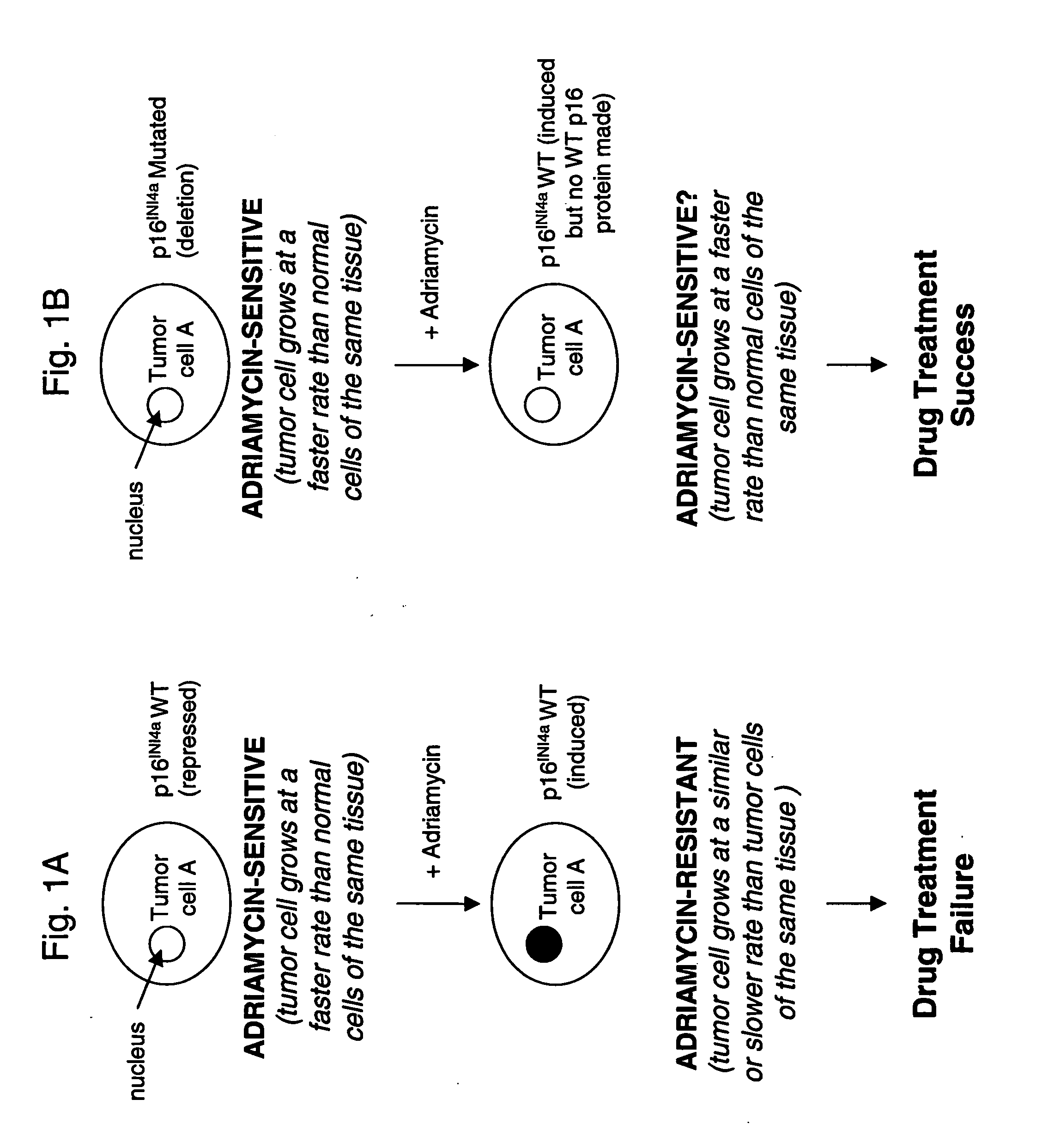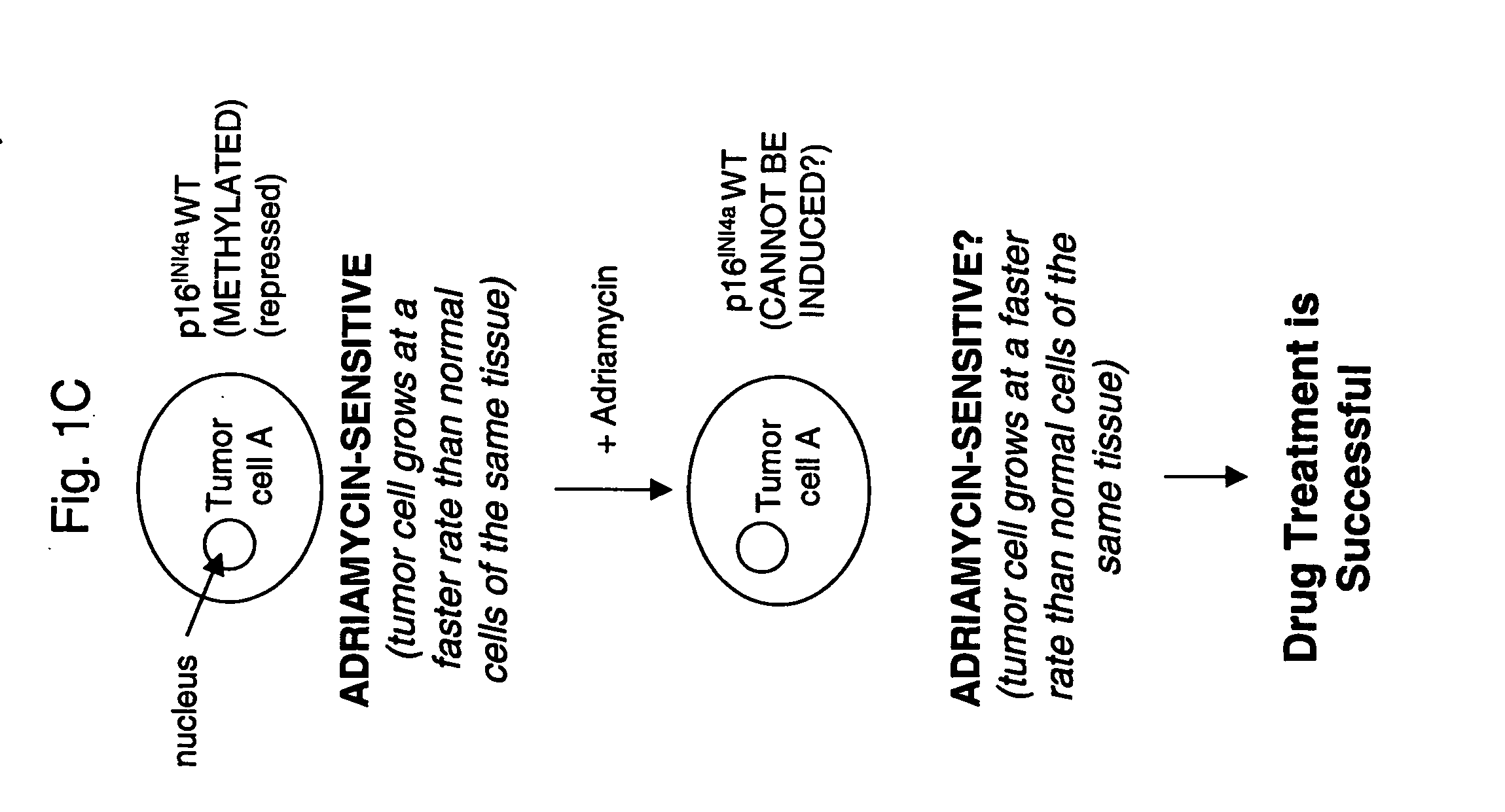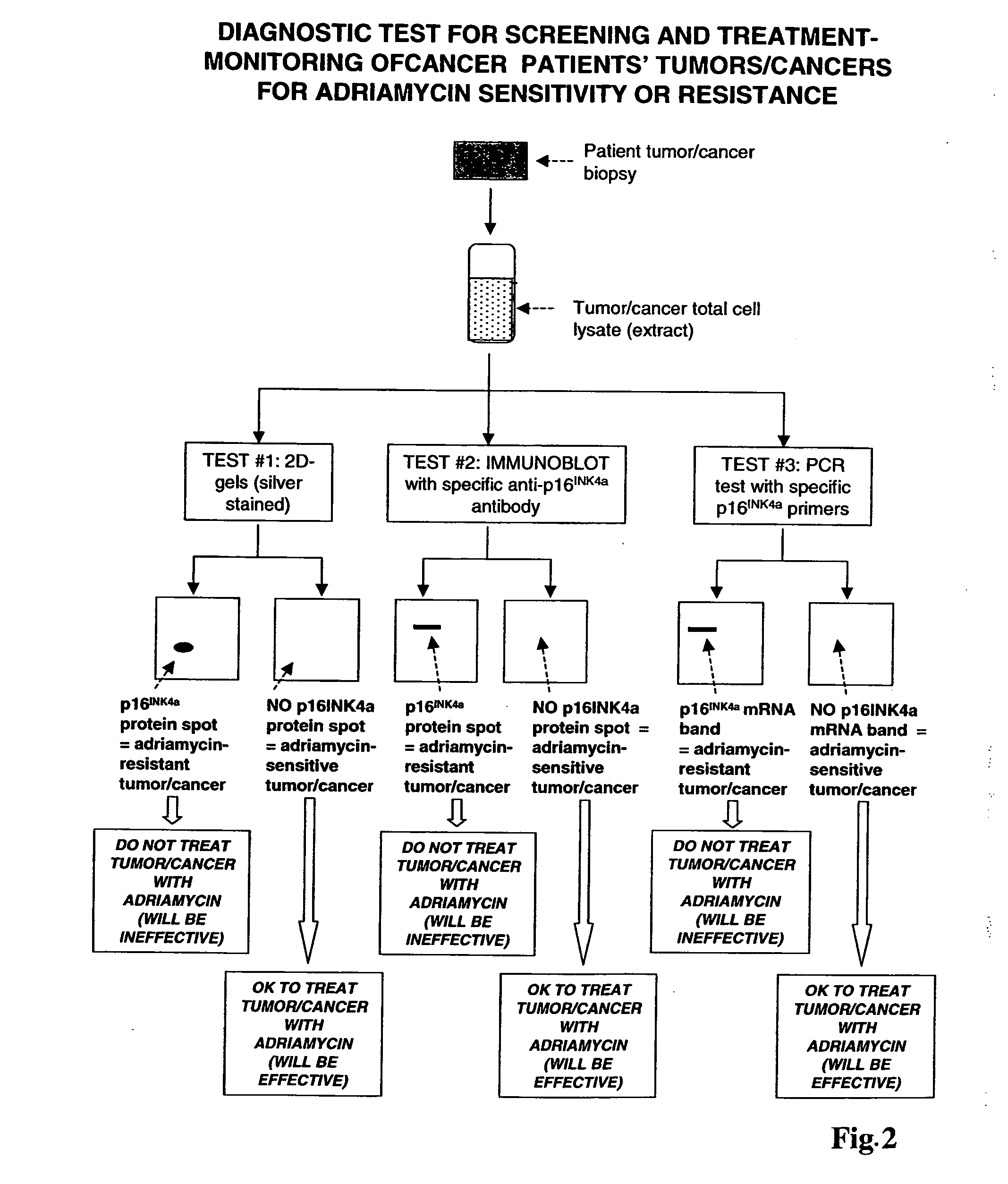Methods for identifying chemotherapeutic resistance in non-hematopoietic tumors
a chemotherapeutic resistance and non-hematopoietic tumor technology, applied in the field of cancer treatment, can solve the problems of complicated studies, limited success rate of chemotherapeutic treatment of cancer patients, and none of the proposed mechanisms has yielded a successful therapy for reversing adriamycin and/or multidrug resistance in tumor cells, and achieves the effect of increasing the sensitivity of drug resistant tumor cells and silencing p16 expression
- Summary
- Abstract
- Description
- Claims
- Application Information
AI Technical Summary
Benefits of technology
Problems solved by technology
Method used
Image
Examples
example 1
[0177] Differential P16 Expression in Adriamycin-Resistant Tumor Cells
[0178] Two-dimensional gel analysis, followed by mass spectroscopy, was performed to determine which proteins were differentially expressed by adriamycin-resistant cells and their adriamycin-sensitive counterparts.
[0179] For these studies, breast adenocarcinoma cell lines MCF7 and MDA-MB-231 were obtained from American Type Culture Collection (“ATCC”; Manassas, Va., USA). Drug resistant MCR7 / AR cells (derived from drug-sensitive MCF7 cells), which are ten times more resistant to adriamycin than its drug-sensitive parent cell line, were provided by McGill University, Montreal, Quebec, Canada. Drug resistant MDA-MB-231 / AR cells (derived from drug-sensitive MDA-MB-231 cells), which are ten times more resistant to adriamycin than its drug-sensitive parent cell line, were provided by Aurelium BioPharma Inc., (Montreal, Quebec, Canada).
[0180] Cell culture supplies were purchased from Gibco Life Technologies (Burlingt...
example 2
[0198] Adriamycin Sensitivity in Tumor Cells
[0199] Experiments were next performed to determine whether various tumor cells (both solid tumor and hematological tumors) having different sensitivity to adriamycin had different levels of p16INK4a expression.
[0200] For these studies, the following human cell lines were obtained from American Type Culture Collection (“ATCC”; Manassas, Va., USA). These included breast adenocarcinoma cell lines MCF7 and MDA-MB-231, ovarian adenocarcinoma cell lines SKOV3 and OVCAR3, prostate adenocarcinoma cell line PC3, acute lymphoblastic leukemia cell lines CEM and MOLT-4, chronic myelogeneous leukemia cell line K-562 and acute promyelocytic leukemia HL60. The drug resistant cells, MCF7 / AR, SKOV3 / VLB, small cell lung carcinoma H69, H69 / AR, HL60 / AR, CEM / VLB 0.1 μM and CEM / VLB 1 μM, were provided by McGill University, Montreal, Quebec, Canada. Other drug resistant cells (namely, MCF7 / VLB, MCF7 / VCR, MCF7 / Mito, MDA-MB-231 / AR, MDA-MB-231 / Mito, SKOV3 / CIS, S...
example 3
Inhibition of p16 Results in Increased Adriamycin Sensitivity in Tumor Cells
[0232] Further experiments were performed to inhibit p16 expression using RNA interference, and determine if cells having reduced p16 expression also had increased sensitivity to adriamycin.
[0233] For these experiments, the following methods were used:
I. p16 siRNA transfections
[0234] The genomic sequence of p16INK4a is provided in SEQ ID NO: 2 (and GenBank Accession Nos. NM 000077.2 GI: 17738299. Two siRNA duplexes were chosen that targeted unique sequences in the p16 INK4a locus: CAACGCACCGAATAGTTAC (p16 siRNA Duplex I; SEQ ID NO: ______) and CGGAAGGTCCCTCAGACAT (p16 siRNA Duplex II; SEQ ID NO: ______). The first sequence is from Exon 1a, spanning nucleotides 385-404 counting from the start codon. The second sequence is from Exon 3, spanning nucleotides 714-733 of the p16 mRNA. Both sequences are specific for the p16INK4a transcript and are not in regions homologous to the other INK4a inhibitors, and d...
PUM
| Property | Measurement | Unit |
|---|---|---|
| Fraction | aaaaa | aaaaa |
| Fraction | aaaaa | aaaaa |
| Fraction | aaaaa | aaaaa |
Abstract
Description
Claims
Application Information
 Login to View More
Login to View More - R&D
- Intellectual Property
- Life Sciences
- Materials
- Tech Scout
- Unparalleled Data Quality
- Higher Quality Content
- 60% Fewer Hallucinations
Browse by: Latest US Patents, China's latest patents, Technical Efficacy Thesaurus, Application Domain, Technology Topic, Popular Technical Reports.
© 2025 PatSnap. All rights reserved.Legal|Privacy policy|Modern Slavery Act Transparency Statement|Sitemap|About US| Contact US: help@patsnap.com



